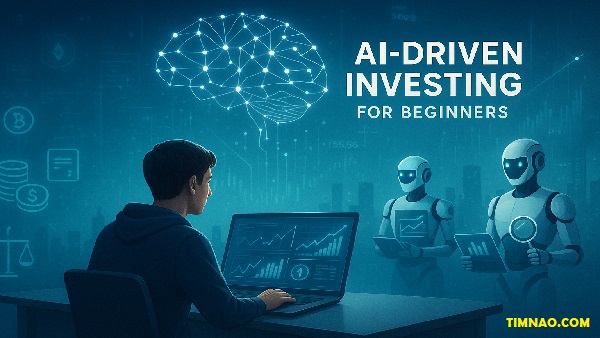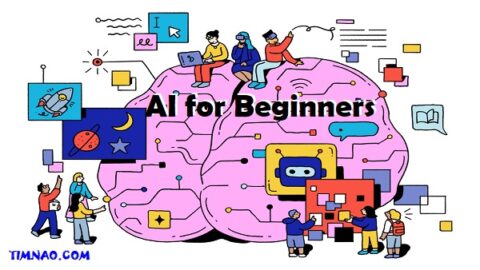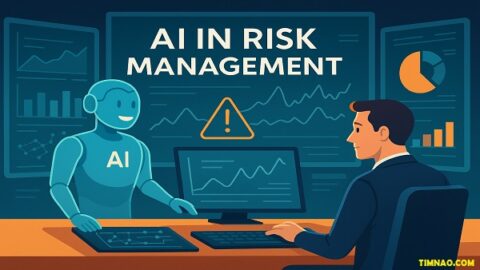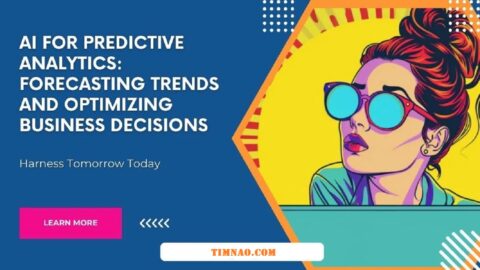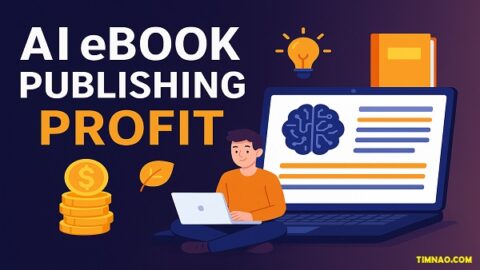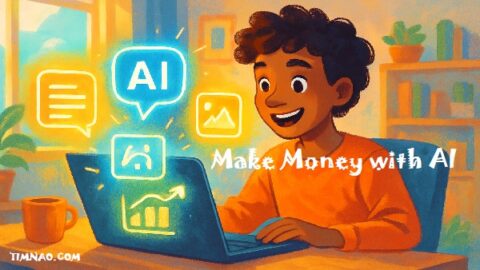Unlock Smarter Wealth: Why Data-Driven Investing with AI is a Game-Changer 🚀
Data-driven investing is reshaping the way people approach the stock market and personal finance. Instead of guessing or relying on emotional decisions, investors today have access to powerful tools that analyze massive amounts of information—from company reports to social media trends—in seconds. With the help of artificial intelligence (AI), even beginners can uncover patterns, measure risks, and build smarter strategies that used to be reserved for Wall Street professionals.
What makes this shift exciting is how accessible it has become. You don’t need a background in coding or finance to benefit from AI in investing. Modern platforms simplify complex data into clear insights, giving everyday investors the confidence to make better choices. Whether your goal is to grow a long-term portfolio, explore crypto, or simply avoid common beginner mistakes, learning how to use data-driven strategies can put you miles ahead of those relying only on intuition.
In this guide, we’ll break down the essentials of AI-powered investing in plain language, share real examples, and give you actionable steps to start using data to your advantage. If you’re new to the market, this is your roadmap to smarter, safer, and more rewarding investment decisions.
✅ Table of Contents
- 📊 The Shift Toward Data-Driven Investing
- 🔎 Where Investors Get Their Data
- 🛠️ Simple Tools Beginners Can Use
- 🤖 How AI Is Reshaping Finance
- 📈 Predicting Markets with Machine Learning
- 💬 Reading Market Sentiment with NLP
- 🧠 Deep Learning for Smarter Forecasts
- 🛡️ AI for Risk Management and Safer Portfolios
- ⚖️ Ethics Every Beginner Should Know
- 🌍 What’s Next in AI-Driven Investing
- 🚀 Action Steps for Beginners to Get Started
- 📊 Turning Theory Into Action
- 🙋 FAQs for Beginners
📊 The Shift Toward Data-Driven Investing
For most of history, investing was more art than science. Traders crowded on stock exchange floors, shouting buy and sell orders, guided by instinct, rumors, and hand-written notes. Investors often trusted “gut feeling” or followed advice from friends, newspapers, or TV commentators. While some people got lucky, many lost money simply because decisions weren’t grounded in facts.
That picture is quickly changing. Today’s markets are shaped by data-driven investing, where choices are made using evidence rather than emotions. Instead of hoping a stock will rise, investors now analyze financial statements, market activity, and even alternative data like social media sentiment or satellite images. The goal is simple: let the numbers guide decisions, not feelings.
This shift is driven by two key forces: the explosion of data and the rise of artificial intelligence (AI). Every second, massive amounts of financial information are generated—stock prices, trading volumes, earnings reports, news updates, tweets, even Google searches. No single human could process it all, but AI tools can. By turning overwhelming data into clear signals, they help investors make smarter moves.
For beginners, this is a huge opportunity. In the past, access to deep market analysis was expensive and limited to professionals. Today, many platforms provide simplified dashboards, AI-powered recommendations, and user-friendly apps that make it possible for anyone to invest smarter. Think of it as the difference between navigating with an old paper map versus using Google Maps with real-time traffic updates—the second option is faster, clearer, and safer.
Why This Shift Matters for Beginners
When you rely only on intuition, it’s easy to fall into common traps: chasing hype stocks, panicking during downturns, or ignoring hidden risks. Data-driven investing reduces these mistakes by giving you evidence-based insights.
For example, during the meme-stock craze of 2021, many beginners jumped into GameStop and AMC based purely on social media buzz. Some made money, but many bought at the peak and lost big when the excitement faded. A data-driven approach would have looked deeper—examining trading volumes, financial health, and market sentiment—to reveal that the hype wasn’t sustainable.
Data doesn’t guarantee success, but it gives you a more realistic picture of what’s happening. Instead of gambling, you’re making decisions with a clearer understanding of risks and potential rewards.
Real-World Examples of Data-Driven Investing
- Robo-advisors like Betterment and Wealthfront use algorithms to design and manage portfolios automatically. They consider your goals, risk tolerance, and timeline, then rebalance your investments as markets change. Even beginners can access strategies once reserved for wealthy clients.
- Retail trading platforms such as Robinhood and eToro provide AI-powered insights, showing which stocks are trending, how analysts are rating them, and what risks might be present.
- Professional funds use big data in creative ways. Hedge funds, for instance, analyze satellite images of parking lots to estimate retail store sales before earnings reports. This data helps them predict stock performance earlier than traditional methods.
The key takeaway is that data-driven investing is no longer reserved for Wall Street insiders. Beginners can now use many of the same tools on their smartphones or laptops.
🔎 Where Investors Get Their Data
The next big question is: where does all this data come from? If investing is becoming data-driven, you need to know which types of information matter most. Let’s break it down into three main categories—traditional data, alternative data, and real-time sentiment.
1. Traditional Data
This is the foundation of investing and the easiest place for beginners to start. It includes:
- Financial statements (balance sheets, income statements, cash flow statements) that reveal a company’s health.
- Market data, like stock prices, trading volumes, and market indexes.
- Economic indicators, such as inflation rates, unemployment figures, and GDP growth.
Platforms like Yahoo Finance or Morningstar make this information free and accessible.
Beginner tip: Start by learning to read an income statement. Look for whether a company is consistently profitable, how much debt it carries, and how its revenue is growing. These basics can help you avoid investing in businesses that look exciting on the surface but are financially unstable underneath.
2. Alternative Data
This is where things get exciting. Alternative data refers to unconventional sources of information that reveal hidden insights. Examples include:
- Social media activity: Tracking how people talk about a company online. For example, spikes in Twitter mentions often precede big moves in stock prices.
- Satellite imagery: Hedge funds have used satellite photos to count cars in Walmart parking lots, giving them early clues about sales before earnings reports.
- Web traffic and app usage: Companies like SimilarWeb measure website visits, helping investors see whether a brand is gaining or losing popularity.
While not every beginner needs to use satellite data, you can still tap into alternative sources in simple ways. For instance, you can follow Google Trends to see if interest in a product or company is rising.
Example: During the early days of the COVID-19 pandemic, search terms like “Zoom app” and “remote work software” skyrocketed. Investors who noticed this early could have predicted Zoom’s stock surge.
3. Real-Time Sentiment Data
Markets don’t move only because of numbers—they also respond to emotions. That’s where sentiment analysis comes in. Using Natural Language Processing (NLP), AI can analyze news headlines, analyst reports, and even tweets to gauge the market’s mood.
For beginners, this doesn’t mean you need to build your own AI model. Instead, you can use platforms like StockTwits or MarketPsych, which track sentiment and display whether the crowd feels bullish (optimistic) or bearish (pessimistic).
Why it matters: If the crowd is overly optimistic, it might signal a bubble. If fear dominates, it could indicate buying opportunities. By keeping an eye on sentiment, you learn to recognize when emotions—not fundamentals—are driving prices.
By exploring different types of data—from traditional numbers to real-time sentiment—beginners can see how each piece adds a unique layer of understanding. In the next section, we’ll look at the practical tools that make it easier to use these insights in real investing.
🛠️ Simple Tools Beginners Can Use
When you’re just starting out, investing can feel overwhelming. The good news is that you don’t need complicated software or expensive subscriptions to get started. Many beginner-friendly investing tools are now available for free or at very low cost, making it possible to analyze data and make informed decisions without needing advanced skills.
Mobile Apps That Simplify Investing
Today’s investing apps are designed with beginners in mind. They strip away confusing financial jargon and present insights in clean, visual dashboards.
- Robinhood (robinhood.com) lets you buy and sell stocks, ETFs, and even crypto with just a few taps. Its charts show price history, analyst ratings, and trending tickers so you can see where the crowd is paying attention.
- eToro (etoro.com) is especially useful if you’re still learning. It offers “copy trading,” which allows you to mirror the strategies of experienced investors while you build your own skills.
- Acorns (acorns.com) rounds up spare change from your daily purchases and invests it automatically into diversified portfolios. For beginners, this is an effortless way to start growing wealth.
These apps don’t just execute trades—they provide data-driven insights in a way that feels natural and beginner-friendly.
Free Data Platforms
Before making a decision, investors often want to research company fundamentals, market news, and analyst opinions. Fortunately, some of the best resources are completely free:
- Yahoo Finance (finance.yahoo.com) is a classic source for stock quotes, financial reports, and company news. Its interactive charts help you see performance over time.
- TradingView (tradingview.com) is loved by beginners and professionals alike. It provides real-time charts, technical indicators, and a huge community where traders share ideas and strategies.
- Morningstar (morningstar.com) gives detailed analysis of mutual funds and ETFs, perfect for beginners looking for long-term investments.
Beginner tip: Start by comparing at least two different data sources before making a decision. If both platforms show consistent trends, you’ll feel more confident in your choice.
Robo-Advisors for Hands-Off Investors
Not everyone wants to pick individual stocks. Robo-advisors use algorithms to build and manage diversified portfolios automatically.
- Betterment (betterment.com) asks you a few questions about your goals, risk tolerance, and timeline, then creates a tailored portfolio.
- Wealthfront (wealthfront.com) goes further, offering features like tax-loss harvesting and automatic rebalancing, which can boost returns without extra effort.
For beginners, robo-advisors are like having a professional financial planner—without the high fees. You simply deposit money and let the system work in the background.
Tools for Learning and Practice
Before risking real money, it’s smart to practice. Many platforms now offer paper trading, which lets you simulate investments with virtual money.
- TradingView has a built-in paper trading feature.
- Investopedia Simulator lets you practice stock and options trading in a safe environment.
This way, you can test strategies, explore data-driven decisions, and build confidence before committing your own funds.
🤖 How AI Is Reshaping Finance
Artificial intelligence is no longer science fiction—it’s at the heart of modern finance. From robo-advisors to algorithmic trading, AI is changing the way money moves around the world. For beginners, understanding these changes is crucial because it explains why data-driven investing is becoming so powerful.
AI in Everyday Investing
You may already be using AI in your financial life without realizing it.
- Personal finance apps like Mint or YNAB use AI to categorize spending, suggest savings strategies, and alert you to unusual activity.
- Brokerage platforms integrate AI chatbots that answer questions about your portfolio or explain financial terms.
- Stock screening tools now use machine learning to highlight opportunities that fit your risk level and goals.
AI is quietly working in the background, giving beginners better information and personalized guidance than ever before.
Predicting Market Trends
One of the most powerful uses of AI is in forecasting. Machine learning models can analyze thousands of data points—historical prices, earnings reports, economic indicators—and detect patterns humans would miss.
For example, some AI systems monitor Twitter, Reddit, and news outlets to measure sentiment about specific stocks. If buzz around a company is rising, AI can flag it early, giving investors a head start before prices move.
Beginners don’t need to build these models themselves. Many platforms, like Kavout, offer AI-driven stock ratings that simplify complex data into easy-to-understand scores.
AI-Powered Risk Management
Every investment carries risk, but AI can help reduce surprises. Advanced systems track correlations between assets, market volatility, and global events to warn investors when their portfolios are overexposed.
Imagine you’ve invested heavily in tech stocks. An AI-powered platform might alert you that your portfolio is too concentrated and suggest adding healthcare or energy stocks to balance the risk. This makes risk management proactive rather than reactive.
AI in Professional Trading
On Wall Street, AI is already deeply embedded. Hedge funds use machine learning models that trade at lightning speed, responding to new data in milliseconds. High-frequency trading firms rely on AI to make millions of micro-decisions every day.
For beginners, the lesson is not to compete with these giants but to learn from the same principles. While you won’t be running billion-dollar algorithms, you can use AI-powered apps and robo-advisors to gain a simplified version of those insights.
The Democratization of AI in Finance
Perhaps the most exciting development is that AI is no longer limited to big institutions. Many tools are built with beginners in mind, offering simple dashboards, explanations in plain language, and step-by-step guidance.
This democratization means you don’t need a finance degree or coding skills to benefit. You just need to choose the right platforms, stay consistent, and let AI handle the heavy lifting.
By exploring these beginner-friendly tools and seeing how AI is reshaping the financial world, new investors can better understand why data-driven investing is not just a trend—it’s the future. Next, we’ll look at practical strategies that tie these insights together into smarter investment approaches.
📈 Predicting Markets with Machine Learning
Predicting where markets will go has always been the dream of investors. In the past, this was mostly guesswork. Traders watched charts, compared past price movements, and made assumptions. While technical analysis and fundamental research still play a role, machine learning (ML) now gives investors a powerful edge. Instead of relying on human intuition alone, ML can process massive amounts of information, detect hidden patterns, and generate predictions that would be impossible to see otherwise.
For beginners, this doesn’t mean you’ll suddenly have a crystal ball. Markets are influenced by countless factors, and no model is perfect. But machine learning can help you make better-informed decisions by reducing noise and highlighting probabilities rather than guesses.
What Is Machine Learning in Simple Terms?
At its core, machine learning is a way for computers to “learn” from data without being explicitly programmed. Instead of following strict rules, ML models adapt by analyzing examples. If you feed a model thousands of past stock prices, it can identify patterns that often repeat.
Here’s a simple analogy: Imagine you want to predict tomorrow’s weather. If you only look at the sky, you might guess based on whether it looks cloudy. A machine learning system, however, would analyze decades of weather data—temperature, humidity, wind patterns, satellite images—and then calculate the likelihood of rain. In investing, the process works the same way, just with financial data instead of weather data.
Key Types of Machine Learning Used in Investing
There are many branches of ML, but beginners only need to know the basics of how they’re applied in finance.
1. Supervised Learning
This is when a model is trained with labeled data. For example, you give it thousands of examples of stock movements along with whether the stock went up or down. The system learns the relationship between input data (such as earnings reports, interest rates, or trading volume) and the output (price rising or falling).
- Beginner application: Some platforms use supervised learning to generate “buy” or “sell” signals based on past market behavior. You can treat these signals as hints rather than instructions, using them to guide your own research.
2. Unsupervised Learning
In this case, the model doesn’t know the correct answer. Instead, it groups data into clusters based on similarities.
- Example: An unsupervised ML model might group stocks that behave similarly, even if they belong to different industries. This helps investors discover hidden relationships, such as how certain airline and oil company stocks move together due to fuel prices.
3. Reinforcement Learning
This method is like trial and error. The model tries actions, receives feedback (reward or penalty), and improves over time.
- Real-world example: Some hedge funds use reinforcement learning to design trading bots that adjust strategies based on live market feedback. While this is advanced, the principle shows how AI can continually refine its decision-making.
What Data Do These Models Use?
The effectiveness of machine learning depends heavily on the quality of the data. In investing, ML models might analyze:
- Historical prices of stocks, bonds, or crypto assets.
- Macroeconomic indicators like inflation, unemployment, or GDP growth.
- Company fundamentals such as earnings per share (EPS), revenue, or debt ratios.
- News and sentiment data from articles, analyst reports, or social media.
- Alternative data like satellite imagery, credit card transactions, or app downloads.
For beginners, you don’t need access to complex datasets. Many tools package these insights in user-friendly dashboards so you can benefit from ML without handling raw data.
Beginner-Friendly Tools That Use ML
Fortunately, you don’t need to build models yourself. Several platforms already integrate ML to help beginners:
- Kavout (kavout.com) provides a “Kai Score,” an AI-driven ranking of stocks based on predictive analytics.
- Zacks Investment Research (zacks.com) uses ML to generate rankings of stocks, making it easy to spot potential outperformers.
- Numerai (numer.ai) is a hedge fund powered by crowdsourced ML models. While more advanced, it shows how collective intelligence can predict markets.
For crypto enthusiasts, platforms like Token Metrics (tokenmetrics.com) use ML to analyze blockchain data and provide price predictions for digital assets.
Benefits of Using Machine Learning for Beginners
- Pattern Recognition: ML can detect recurring trends in stock movements faster than humans.
- Sentiment Analysis: Instead of manually reading hundreds of news stories, ML summarizes the market’s mood in real time.
- Risk Warnings: Some platforms flag when your portfolio is too concentrated in one sector or asset type.
- Opportunity Spotting: ML models can suggest investment opportunities based on criteria you set, like growth stocks or undervalued companies.
For beginners, this means less guesswork and more clarity.
Limitations and Risks
While machine learning is powerful, it’s not magic. Beginners must be aware of its limits:
- Data bias: If the training data is flawed, the predictions will be flawed too.
- Overfitting: A model might perform perfectly on past data but fail in new conditions.
- Black box effect: Some ML models are so complex that even experts don’t fully understand how they reach their predictions.
This is why beginners should treat ML insights as guides, not guarantees. Always combine AI-driven predictions with your own research and a clear understanding of your risk tolerance.
Practical Beginner Example
Imagine you’re interested in Tesla stock. A machine learning model might analyze:
- Past price movements of Tesla.
- Earnings reports and delivery numbers.
- News sentiment about electric vehicles.
- Google Trends data for “Tesla Model Y.”
The model might then estimate a 65% probability that Tesla’s stock price will rise over the next month. As a beginner, you wouldn’t blindly invest because of this number, but you’d use it to guide your research. You might look for confirming signals—such as analyst reports or broader EV market trends—before making a decision.
How Beginners Can Get Started with ML Predictions
- Use platforms with built-in ML tools instead of trying to code your own.
- Start with paper trading to test how ML predictions perform without risking money.
- Combine ML with traditional analysis (fundamentals and technicals).
- Stay updated—AI models evolve, and so do markets. Platforms often update their predictions as new data arrives.
Machine learning is not a crystal ball, but it offers beginners a smarter way to see the markets. By understanding how ML works, what data it uses, and where its strengths and weaknesses lie, you can take advantage of predictive insights while avoiding overreliance. Next, we’ll dive deeper into how investors can build smarter strategies around these predictions and avoid common pitfalls that trap beginners.
💬 Reading Market Sentiment with NLP
Markets are not only moved by numbers—they’re also driven by emotions. Fear, excitement, and uncertainty often cause investors to act in ways that shape stock prices. For beginners, it can feel impossible to measure these emotions, but technology offers a solution. Natural Language Processing (NLP), a branch of AI, helps analyze human language at scale to understand the mood of the market.
What Is NLP in Simple Terms?
Think of NLP as teaching a computer to “read” text the way humans do. Instead of just counting words, it interprets meaning, tone, and context. By scanning thousands of news articles, social media posts, and financial reports, NLP systems can detect whether people are generally positive, negative, or uncertain about a company or the market overall.
For beginners, this is like having an assistant who summarizes the mood of millions of investors in a few easy-to-read charts.
How Market Sentiment Affects Prices
Investor sentiment plays a huge role in short-term market moves:
- Positive news (like strong earnings or a product launch) often boosts stock prices.
- Negative news (like layoffs or lawsuits) can trigger sell-offs.
- Hype-driven sentiment on platforms like Reddit or Twitter has caused massive swings, as seen in the GameStop and AMC rallies.
Understanding sentiment can help beginners avoid buying into hype at the peak or panic-selling during temporary downturns.
Beginner-Friendly Tools That Use NLP
Several platforms have integrated NLP to make sentiment analysis easy:
- StockTwits (stocktwits.com) is like Twitter for investors, where NLP measures bullish vs. bearish sentiment on trending stocks.
- MarketPsych Indices (available through Refinitiv) tracks emotions in financial news globally.
- Accern (accern.com) uses NLP to transform news and social chatter into actionable investment insights.
Even free sites like Yahoo Finance include sentiment indicators in their stock analysis pages. Beginners can use these signals as an extra layer of information alongside price charts.
Practical Example
Imagine you’re considering investing in Apple. An NLP tool scans thousands of news articles and tweets mentioning Apple in the past week. It shows that 65% of sentiment is positive, highlighting excitement around a new iPhone launch.
For a beginner, this doesn’t mean “buy now,” but it signals that optimism is high. You can combine this with technical data (such as recent price movement) to decide if the sentiment aligns with your investment goals.
🧠 Deep Learning for Smarter Forecasts
While NLP focuses on understanding language, deep learning is another AI approach that takes prediction to a higher level. It mimics the human brain using layers of artificial “neurons” to analyze complex data. Deep learning is what powers advanced technologies like self-driving cars, facial recognition, and yes—financial forecasting.
What Is Deep Learning?
Deep learning is a type of machine learning that uses neural networks with many layers. Each layer processes information in increasingly abstract ways. For example, the first layer might detect small patterns in stock prices, while deeper layers combine those patterns to forecast long-term trends.
For beginners, think of deep learning as a microscope that reveals hidden details in financial data, details too complex for traditional models to capture.
Why Deep Learning Matters in Finance
Financial markets are noisy and unpredictable, influenced by countless variables at once. Deep learning excels because:
- It can handle massive amounts of data from multiple sources at once (prices, news, economic data).
- It adapts to changing conditions, improving accuracy over time.
- It recognizes non-linear relationships that humans and simpler models often miss.
This makes it especially powerful for building smarter forecasts about where markets might head next.
Beginner-Friendly Applications
Although deep learning sounds advanced, many tools now package its power into simple interfaces:
- Alpaca (alpaca.markets) offers algorithmic trading platforms that can integrate deep learning models.
- Sentifi (sentifi.com) uses deep learning to track over 500 million sources of data, giving investors early warnings of market shifts.
- BigML (bigml.com) provides user-friendly machine learning services where beginners can experiment with predictive models without coding.
These platforms allow newcomers to test deep learning forecasts through dashboards rather than building neural networks themselves.
Example of Deep Learning in Action
Let’s say you’re curious about predicting Bitcoin’s price. A deep learning model might:
- Analyze historical price data.
- Incorporate macroeconomic signals like inflation and interest rates.
- Process sentiment data from Twitter and Reddit.
- Include blockchain data like transaction volume.
After processing all this, the model might suggest a rising trend over the next two weeks with a 70% probability. For beginners, this doesn’t replace research but offers a probability-based perspective that can guide decision-making.
Strengths and Weaknesses of Deep Learning
Strengths:
- Handles vast, complex data better than traditional methods.
- Learns and improves as more data is added.
- Provides more nuanced forecasts compared to basic models.
Weaknesses:
- Requires high-quality data—garbage in, garbage out.
- Often operates as a “black box,” so it’s hard to understand exactly why it made a prediction.
- Forecasts probabilities, not guarantees, so investors must still manage risk.
How Beginners Can Use Deep Learning Wisely
- Start with platforms, not coding. Choose services that integrate deep learning into easy dashboards.
- Combine forecasts with basics. Always cross-check predictions with company fundamentals and your own goals.
- Avoid over-reliance. Think of deep learning as one tool in your toolbox, not the entire strategy.
- Test with paper trading. Many platforms let you practice using forecasts without real money at risk.
By learning how NLP reveals market sentiment and how deep learning sharpens forecasts, beginners gain two of the most exciting AI-powered tools in modern finance. Next, we’ll explore how to combine these insights into practical strategies that help you build smarter portfolios while sidestepping common pitfalls.
🌍 What’s Next in AI-Driven Investing
The world of investing is changing faster than ever. Artificial intelligence has already reshaped how investors access data, manage risks, and make predictions. But what’s next? For beginners, understanding the future of AI in investing helps you prepare and make smarter choices today.
Greater Personalization
In the near future, AI will move beyond one-size-fits-all tools. Imagine having a digital advisor that understands your financial goals, spending habits, and even your tolerance for stress. Instead of broad recommendations, AI will offer personalized strategies tailored to each individual investor.
This level of customization is already happening with robo-advisors like Betterment and Wealthfront, but future versions will be far more precise—analyzing real-time life events, tax situations, and market conditions to adjust your portfolio instantly.
Real-Time Global Data Integration
Today, most retail investors rely on delayed or simplified data. The next wave of AI will process global information in real time—from satellite images of shipping routes to social media chatter in emerging markets.
For example, a future AI tool could alert you that a drought in South America is likely to impact global coffee prices before traditional media even reports it. Beginners won’t need to be experts in commodities, because AI will deliver these insights directly.
Smarter Risk Anticipation
Instead of just reacting to volatility, AI will learn to predict potential crises earlier. By analyzing cross-market relationships, future models may detect early signals of recessions, geopolitical conflicts, or bubbles forming.
For beginners, this could mean warnings to rebalance portfolios weeks before a market downturn hits the headlines.
Collaboration Between Humans and AI
One misconception is that AI will fully replace human decision-making. In reality, the future will be about partnership. Humans provide judgment, creativity, and ethical oversight, while AI provides speed, accuracy, and data crunching.
Think of it like flying an airplane: autopilot handles routine tasks, but the pilot remains in charge when unexpected challenges appear. Similarly, investors of the future will rely on AI but still steer their financial journey.
Broader Access Through Mobile Platforms
Currently, advanced AI tools are often available only to institutions or wealthier investors. Over the next decade, these technologies will become more accessible on mobile apps. This democratization means beginners will get access to tools once reserved for hedge funds.
Apps may soon allow anyone to use predictive AI, personalized financial planning, and real-time risk alerts—all from their smartphone.
🚀 Action Steps for Beginners to Get Started
Knowing about AI in investing is one thing; putting it into practice is another. For beginners, the key is to start small, stay safe, and build confidence as you learn. Here are practical steps you can take today.
Step 1: Define Your Goals
Before you dive into AI tools, get clear on what you want:
- Are you saving for retirement, buying a home, or just learning?
- How much risk are you comfortable with?
- What time horizon are you investing for?
AI can only help if it knows your goals. Start by writing them down.
Step 2: Try a Robo-Advisor
Robo-advisors are the easiest entry point into AI-driven investing. Platforms like Betterment (betterment.com) and Wealthfront (wealthfront.com) use algorithms to build and manage diversified portfolios for you.
For beginners, this means you don’t need to pick individual stocks. The AI system invests your money in a mix of assets based on your profile and rebalances automatically.
Step 3: Experiment With AI Stock Research
Once you’re comfortable, explore tools that use AI for stock analysis.
- Zacks Investment Research ranks stocks with AI-driven signals.
- Kavout provides predictive Kai Scores for equities.
- Token Metrics helps with crypto predictions.
These tools give you insights you can compare with traditional analysis. Start by testing ideas with small amounts or even paper trading to see how predictions perform.
Step 4: Use AI for Risk Monitoring
Protecting your money is just as important as growing it. Tools like Qraft AI ETFs or AI-driven portfolio dashboards will alert you if you’re overexposed to one asset or sector.
Beginners should set up notifications and review them regularly. Treat these alerts as a safety net to keep emotions in check.
Step 5: Learn Basic AI Concepts
You don’t need to become a data scientist, but learning the basics helps. Understand terms like machine learning, natural language processing, and neural networks so you’re not blindly following tools.
There are free courses on platforms like Coursera and edX that cover the basics of AI in finance. Even a few hours of study can give you confidence.
Step 6: Practice With Paper Trading
Before risking real money, many platforms offer paper trading—simulated investing where you test strategies in real markets without financial risk.
This is the best way for beginners to practice using AI-driven signals and see how they play out. It builds experience without fear of losing savings.
Step 7: Stay Updated and Adaptive
AI in investing evolves rapidly. Tools that are cutting-edge today may be outdated in two years. Beginners should adopt a mindset of continuous learning.
Follow financial tech news, join forums, and test new apps. By staying flexible, you’ll always be ready to benefit from the latest advances without falling behind.
The future of AI-driven investing promises personalization, smarter risk alerts, and more accessible tools. For beginners, the journey starts with small, safe steps today—using robo-advisors, experimenting with AI research, and learning the basics. Next, we’ll bring together everything we’ve explored into a clear, practical framework for becoming a truly data-driven investor.
📊 Turning Theory Into Action
Learning about AI-driven investing is exciting, but knowledge alone won’t grow your wealth. Beginners often stop at theory because they’re afraid of making mistakes. The best way forward is to start small, apply gradually, and learn along the way.
Build a Simple Starter Portfolio
You don’t need a large amount of money to begin. Start with a small portfolio, even $100 or $500, using a robo-advisor like Betterment or Wealthfront. These platforms handle diversification, rebalancing, and tax efficiency automatically.
By doing this, you get firsthand experience with AI-based investing without feeling overwhelmed.
Add AI Research Tools Step by Step
Once you’re comfortable, explore AI stock and crypto research tools. For example:
- Kavout’s Kai Score can help you spot promising equities.
- Token Metrics provides AI-driven insights into crypto assets.
- Zacks Rank adds an AI-based perspective on stock performance.
Don’t try to use every tool at once. Pick one, test it with a small trade, and note how the predictions align with actual results.
Practice Risk Controls
Even beginners should make risk management part of their daily habit. Use AI tools that provide risk alerts, diversification suggestions, and volatility warnings. If a tool tells you your portfolio is too concentrated in tech stocks, take action by adding a different sector.
Small adjustments now can save you from bigger losses later.
Test With Paper Trading
Before putting more money at risk, test strategies through paper trading. Many platforms, like Alpaca (alpaca.markets), offer demo accounts where you can simulate trades using real market data.
This allows you to experiment with AI-driven strategies safely, see results, and learn without fear of losing money.
Create a Learning Routine
AI in investing is constantly evolving. Dedicate just 15–20 minutes a week to staying updated. Follow financial technology blogs, watch YouTube channels that explain AI tools, or take short courses on platforms like Coursera.
By treating investing as a skill rather than a gamble, you’ll steadily grow more confident.
🙋 FAQs for Beginners
Beginners usually share the same questions when first exploring AI-driven investing. Here are clear, simple answers to help you move forward without confusion.
Do I Need a Lot of Money to Start Using AI in Investing?
No. Many robo-advisors allow you to start with as little as $100. Some even let you open an account without an initial deposit. The point is not how much you invest at first, but that you begin learning how AI works with real-world money management.
Can AI Guarantee Profits?
Absolutely not. AI can analyze data, spot patterns, and provide predictions, but markets are influenced by unexpected events. Think of AI as a powerful assistant, not a crystal ball. You still need to manage risk and make final decisions yourself.
Is AI Investing Safe?
AI can help make investing safer by identifying risks you might overlook. But safety also depends on the platform you choose. Stick with regulated companies like Wealthfront, Betterment, or Alpaca Markets. Be cautious with unregulated DeFi tools if you’re a beginner.
Will AI Replace Human Investors?
Not entirely. AI handles data analysis faster and more accurately than humans, but human judgment, ethics, and creativity are still essential. The future will be a partnership—AI provides insights, and you decide how to use them.
How Do I Know If an AI Tool Is Trustworthy?
Look for transparency. Trustworthy platforms explain how their AI works and what kind of data it uses. Check if the company is regulated, has positive reviews, and offers clear documentation. Avoid tools that make bold promises of guaranteed returns.
Do I Need to Understand Coding or Data Science?
Not at all. Many AI investing tools are built for beginners with simple dashboards and mobile apps. However, learning basic AI concepts can give you more confidence and help you avoid blindly trusting the technology.
What’s the Best First Step for Me?
Start with a robo-advisor to get comfortable. Then, once you’ve gained some confidence, add a research tool or try paper trading. The key is to move gradually, not to rush into complex strategies from day one.
By moving from theory into action and addressing common beginner questions, you’ll have the confidence to actually apply what you’ve learned. With each small step, AI-driven investing becomes less intimidating and more practical for building long-term wealth.
⚠️ Disclaimer
The information provided in this article is for educational purposes only and should not be considered financial, investment, or legal advice. While every effort has been made to ensure accuracy, investing—especially when using AI tools—carries inherent risks, and past performance does not guarantee future results.
Readers are encouraged to conduct their own research, evaluate personal financial goals, and consult with a licensed financial advisor or professional before making any investment decisions. The examples, platforms, and tools mentioned in this article are provided for illustrative purposes only and do not represent endorsements or guarantees.
By using any of the information or tools described here, you acknowledge and accept full responsibility for your investment choices.

